Wild Dogs of North America
Canines are one of the most beloved and misunderstood groups of animals in the world. There are few groups that can arouse so much passion and dissension among people from all walks of life. The coyote is seen as a pest and nuisance or as a symbol for the American West. The fox is adored in some countries, while hunted for sport in others. The domestic dog is faithful companion to many, feared by some, and food to a few. But, perhaps above all others, the wolf is an animal of controversy, confusion and mystery. Though wolves, coyotes, foxes and dogs all play different roles in our lives, they all share a common ancestral lineage.
Gray Wolves (Canis lupus)
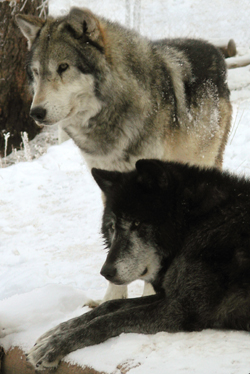
The gray wolf is the largest of the wild canines, usually weighing between 70 and 120 lbs. They vary in coloration greatly - from black to gray to tawny to white. Wolves have slanted eyes, varying from yellow to deep amber in color. To allow for swift and efficient movement through snow, brush and other conditions, wolves have narrow chests, with elbows set close together. A wolf’s tail is straight and usually hangs to its hock (knee). Wolves have noticeably larger heads than other canines, which is often attributed to their high level of intelligence. Wolves’ large paws, which are webbed with fur, aid in movement across mud and snow. Being very social animals, they live, travel, and hunt in packs of typically 2-15 animals, though there have been reports of up to 38 wolves in one pack. Wolves are opportunistic predators, which mean they hunt large and small game, but will also feed off of carrion. Because of the wolf’s large pack size and intricate social hierarchy, they can work together to bring down large game such as deer, elk, bison and moose. Nearly all the different names you hear for for wolves - timber, arctic, Mexican gray, buffalo, plains, Canadian, tundra, ect. - are either nick-names or subspecies of the gray wolf.
Red Wolves (Canis rufus)
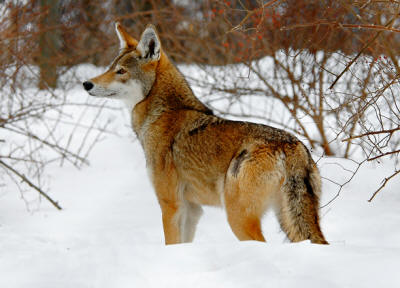
Red wolves are typically smaller than gray wolves and have a reddish coloration, hence the name. There has been much speculation in the past that red wolves are actually hybrids of gray wolves and coyotes, however, recent genetic test have proven them to be a separate and distinct species. At one time, red wolves lived across the U.S. southeast, but were hunted to near extinction by the 1980's. The last wild pairs ever found were captured and put into a captive breeding program. There are now several hundred red wolves living in zoos and breeding facilities across the country. A few have been reintroduced to the Carolinas and are having marginal, yet hopeful, success.
Coyotes (Canis latrans)
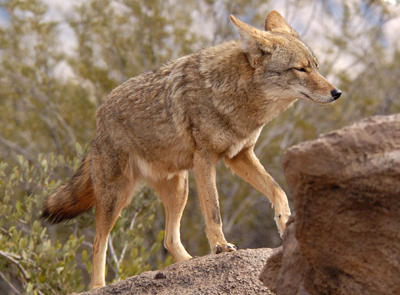
The coyote is smaller in stature than a wolf, and has buff colored fur with shades of tan and dark brown. Sometimes coyotes have a faint black band running down their back. A coyote’s tail hangs to its ankles, proportionally longer than a wolf’s tail. Coyotes have longer and pointier ears than wolves. When coyotes howl, it is distinctly high pitched, and is often accompanied by yipping. Though coyotes usually travel in pairs, they are more solitary than wolves, and females are often found roaming by themselves. Coyotes, like wolves, are opportunistic predators, but because they are smaller in size and live in solitary pairs, rely more on small game and carrion.
Foxes

Foxes are small to medium canids, and have different coloration involving red,
silver, gray, and brown. Five species of fox are native to North America - the
Red Fox, Swift Fox, Kit Fox, Arctic Fox and Gray Fox. Their tails are bushy, and when down, can drag on the ground
(proportionally longer than both wolves and Coyotes). Foxes are also more
solitary than wolves, and typically travel in mated pairs. As omnivorous
animals, foxes eat a variety of rodents, small game, carrion, and even bugs.
Arctic foxes eat voles, squirrels, birds, berries, fish, lemmings and carrion.
In the summer arctic foxes are grayish blue, turning white in the winter. Every
spring, the female fox will dig a den and have a litter of 6-12 pups, while the
male will guard his mate and pups and bring home food.
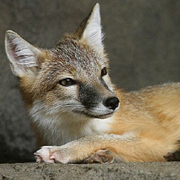
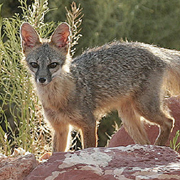
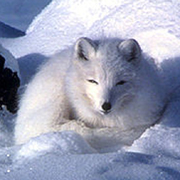
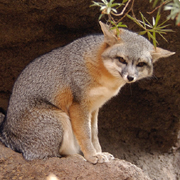
Domestic Dogs (Canis lupus familiarus)
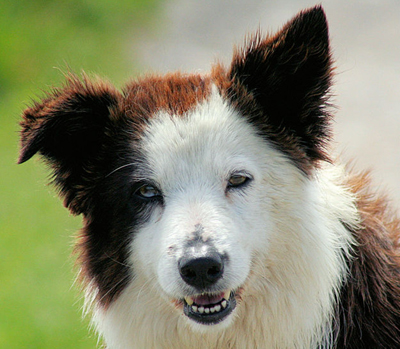
Which of the three wild canines do you think a Pomeranian came from? How about the Rotweiller? The Border Collie? The Poodle? The huge wolf, the middle sized coyote, or the little fox.
It turns out that all domestic dogs, from the Great Dane to the Chihuahua, are directly related to the wolf. But how did this happen? How did the dog end up becoming man’s best friend, while the wolf remained wild and independent? How did a giant wolf become a tiny poodle?
The exact moment has been lost in time. The moment the first wolf braved its fear and stepped into the circle of light cast by man’s fire. The moment the first man stared into the yellow eyes of the wolf, held out his hand, and shared his meal. In that now obscure moment, the history of man and wolf was forever changed. Since that moment when wolf first trusted man and man first trusted wolf, many things have changed, but there still remains a great respect between our species.
There are two theories that explain the events that led up to the domestication of the dog, though both agree that the magical event happened 12,000-15,000 years ago. It is generally agreed that wolves and humans have lived in close proximity to each other over the ages… each caring for their families and hunting for prey in similar fashions. One theory on domestication is that humans sought out, captured and adopted wolf pups to help with the hunt and offer protection. Over thousands of years, the captive wolves who were less aggressive and were good at begging for food adapted to life with humans and consequently had more pups. This slowly led to the creation of the dog… an extremely non-aggressive and puppy-ish wolf. The other theory is very similar, but with key differences. The second theory states that wild wolves were not caught and purposely domesticated by humans, but that certain wild wolves learned to live on the fringes of human communities, existing off of scrounged food scraps and waste. The generations of wolves born into this niche became more and more tame… the more human-friendly the animal, the more food it got, and the more pups it successfully produced. Either theory points right to wild wolves evolving through natural selection into today’s domestic dogs.
Both theories, and even the idea that all dogs came from wolves has been highly contested over the years. However, recent genetic DNA test have shown that the gray wolf’s DNA is 99% identical to all domestic dogs. While still distantly related, coyotes and foxes have very significant differences in their DNA from either the wolf or the dog. In fact, these DNA results have been so convincing and conclusive, that the domestic dog is now classified as a sub-species of the gray wolf. The Latin name of the gray wolf is Canis lupus, and the Latin name for the domestic dog is Canis lupus familiarus.

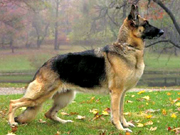
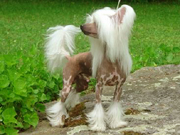
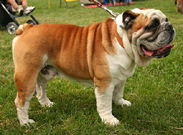
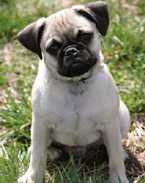
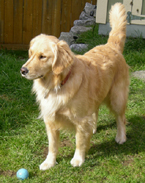
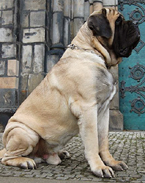
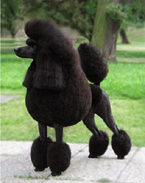
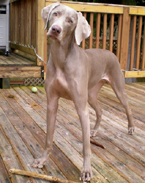
Domestic vs. Wild
Though the dog is a direct descendant from the wolf, there are around 800 breeds of dog (Canis lupus familiaris), constituting a wide range of sizes, colorings, and mentalities. So what is the difference between wolves and dogs? Wolves and dogs are genetically 99 % identical, but display a number of different behavioral and physical characteristics. The difference lies in the 12,000 years it took to domesticate the wolf into a dog, breeding out any wildness from what turned into man’s best friend. It might be helpful to note that humans and chimpanzees are genetically 98% identical, yet we lead very different lifestyles with different motivations and instincts.
What does it mean to be domesticated? Dogs, horses and cows are domesticated, while coyotes, foxes and wolves are wild animals. Dogs were selectively bred to accommodate human’s needs, and have evolved to become dependent on humans for thousands of years. What do you like the most about your dog? That he cuddles with you on the couch, or maybe that he can run at your heels for miles without chasing a squirrel, or that you can teach him all sorts of fun tricks like to play dead, roll over or fetch. This is the response most people have, and all of these characteristics of your pet dog are the result of domestication rather than canine instinct. If you tried to cuddle with an adult wolf, it would probably growl to say “this is my nap time, leave me alone!” If you tried to teach a wolf to heel, as soon as another animal crosses its path, its predatory instinct would far overrule any sort of loyalty you were trying to instill. Wild animals are not suited to live with people. We cannot give them a happy and fulfilled life in captivity because they need the freedom to follow their independent instincts, those that have help them survive on their own for millennia.
What does it mean to be a wild animal? In the process of domestication, 12,000-15,000 years ago, an evolutionary split occurred between the wolves that were to become domestic dogs and the wolves that were to remain wild. The wolves that were unafraid of humans grew dependant on us for food, descending into the domestic dog. On the other side of the split, survival of the fittest was taking effect on the animals that depended on their instincts to survive, resulting in very wild animals that depended on their fear of humans and wild instincts to survive. The animals with the strongest and most intelligent instincts survived, while the others were killed off by the elements or other predators. The theory of survival of the fittest explains how wolves with traits such as shyness have allowed them to survive by staying away from human settlements, where they might be shot for their fur. Nearly all wild animals (such as deer, elk, bears, and mountain lions) have the instinct to be afraid of humans, even large predators. They have learned how to think for themselves, communicate and hunt with each other in very intricate ways - ways that are not conducive to living with people. Inviting a wolf into your home is similar to inviting a bear or deer to live with you. Would you expect either of those animals to understand or respect your furniture, personal belongings or time schedule?
